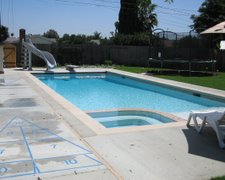Wisconsin middle school gets it right
Here I sit within a few miles from the Pacific Ocean and some of the most popular beaches in the world, and an inland state (yes, I know they have coasts on two Great Lakes and many other bodies of water) is doing a better job of providing water safety to their students. When are we as a population going to realize there is much more to learning than just test scores? Sometimes I think we loose the forest for the trees.
How as a society can we possible believe an emphasis on fences, locks, latches, etc. could possibly be as important as teaching children how to swim?
Here’s an example from here in Orange County. There is a local elementary school where the 5th grade class (10 or 11 years old) of about 100 kids has celebrated the end of the school year and their promotion to middle school with a swim party for at least the last decade until this year. The party was held at a local homeowner’s association facility where they have a swimming pool (shallow and deep ends) without diving boards as well as a wading pool. There are two lifeguard stands situated on the east and west sides of the pool with one primarily covering the deep end and the other primarily covering the area transitioning from shallow to deep.
During the spring of 2006 a non-swimmer attended the party and their parent did not inform anyone of the child’s swimming ability (or inability). Instead the parent told their child not to go to the deep end of the pool. Those of us with kids this age know that 5th graders are only somewhat better than teenagers at remembering and actually following this type of direction. During the course of the party this non-swimmer ended up in the deep end and in trouble. The lifeguards became aware of the situation and pulled the child out of the water and provided the needed assistance in what would be considered a near-drowning event. As a precautionary measure the paramedics were summoned and the child visited the emergency room.
The school principal and superintendent have permanently canceled this type of event. While I do not believe any type of lawsuit came from this incidence, being in one of the most litigious areas of the world (the great state of California) it very easily could have. Life has risks; a few should be avoided or eliminated but the vast majority should be understood, mitigated, and/or concurred. What do we teach our young when we choose not to face risk?
Growing up I lived in inland Los Angeles County. Many years ago when I “graduated” from elementary school we had a pool party too, which was great fun and a good experience for all those that attended. Also, we had a second party where we road school busses about 60 miles each way for a day of fun and play at the beach. Was there risk (hopefully calculated risk), yes! But how do you learn about things and life unless they are experienced?
This event will hopefully return as cooler heads prevail and time has passed. A simple safety plan taken from the Boy Scouts would significantly mitigate the drowning risk. Divide the swimming area into three areas (non-swimmer, moderate swimmer, and good swimmer). Identify each student’s swimming ability (label them with a wrist band) and divide them into the same three groups given to the swimming area. Utilize a buddy system where students can only enter the water when paired up with a partner to “watch their back.” Monitor and enforce the buddy system and provide adequate observation (which apparently was done in the example above).
My family fallows an idea passed down to us, each of my kids must spend at least two summers actively participating in one of the local ocean Junior Lifeguard programs before at what ever age we feel they are responsible enough to spend time at the beach without specific adult supervision. My older son is now a better swimmer than I am and I would want him around if I ever ran into a problem while swimming at the beach. I know that Junior Lifeguard programs exist through out much of the coastal USA communities, as well as, in Australia and New Zealand.
Now back to my original point… It would be great if all kids were taught to swim during elementary (or middle) school, and society would be much stronger if children are exposed to many of life’s risks with tools to mitigate the consequences. Until that time, parents need to take responsibility not only for protecting but also teaching their children through an understanding about risk, consequences, mitigation and of course rewards.


No comments:
Post a Comment